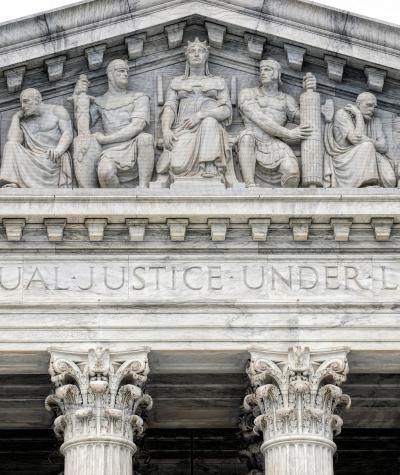The U.S. Supreme Court, by a vote of 5-4, blocked a three-judge district court’s unanimous ruling on February 7 that Section 2 of the Voting Rights Act required Alabama to draw a congressional district map in which Black people would make up majorities in two of seven districts.
To call this order surprising and worrying is an understatement. No matter the intention behind this order, in the upcoming 2022 midterm elections, it will limit the ability of Black voters in Alabama to elect a fairer share of the state’s representatives.
The ruling of the district court panel, which included two Trump appointees, was a thorough and entirely fair application of a law that has been in place since the mid-1980s.
Under Section 2, in a state like Alabama where voting is heavily polarized along racial lines, the map drawers cannot just give the white population disproportionate electoral power by drawing all but one of the districts as majority white – at least not where it is possible to draw two compact Black-majority districts.
So why did the Court issue a stay, which means the unfair maps will be in effect for the 2022 elections? There are only two possible answers, and it’s hard to be sure which is right, since the Court majority did not explain its action.
One answer is that the Court, which simultaneously issued the stay and set the case for argument on the merits in the fall, expects to invalidate Section 2 as unconstitutional.
That fearsome prospect is supported by the rather unusual opinion of Chief Justice John Roberts who voted to deny a temporary stay – noting that the district court’s decision is perfectly consonant with existing law – but also voted to have a full merits hearing. He explained that Section 2 rulings in redistricting cases have engendered lots of controversy.
There is also a second possible explanation of the Court’s action. Justice Brett Kavanaugh offered an entirely different set of reasons for the stay, in an opinion joined only by Justice Samuel Alito. His view is that the stay suggests nothing about the Court’s view of the constitutionality of Section 2.
According to Justice Kavanaugh, the stay was just a routine application of the so-called “Purcell principle” — a Court admonition that federal courts should not change election rules too close to elections.
But, applying the Purcell non-disruption principle here makes little sense. The congressional map being challenged is brand new and has never been used. It was passed in November 2021, and the case was expedited so that the trial and the district court rulings both came in January 2022.
Primary elections are not set to occur until late May. To say that the district court’s ruling came too late is to say that all new maps passed in this decade’s round of redistricting – which were deferred for several months due to census delays – have to be allowed to be used in 2022, regardless of how flagrantly illegal they may be.
As Justice Elena Kagan pointed out in her dissent, this kind of consequential use of the Court’s “shadow docket” is a growing and worrisome phenomenon, precisely because the Court can act without even telling us clearly what is going on.
No matter our race, background or zip code, most of us want voters to live under fair maps and have equitable opportunities to choose their representatives. To make this possible, it would have been far better to allow the district court’s order to take effect this year, subject to whatever decision about the merits the Court may offer up after full briefing and argument.

